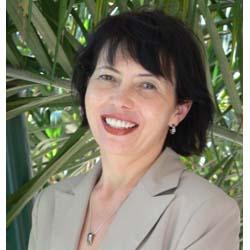Has Rail CRC engineered a new 'Silicon Valley' for Rockhampton?
Published on 19 October, 2006
RAIL Cooperative Research Centre (Rail CRC), established 5 years ago with the headquarters at Central Queensland University in Rockhampton, promises to deliver $1.6 billion to Australia’s rail economy, lending weight to a vision that Rockhampton is well positioned to become Queensland’s 'Silicon Valley'.
In a recent address to the Australian Institute of Management, Rail CRC Business Manager Dr Anna Thomas (pictured) said the CRC was an excellent example of a regionally-based success story.
 “In an independent review by STEM Partnerships (Strategic Technology Evaluation and Management), the Rail CRC was estimated to bring $1.6 billion of benefits to Australia’s rail industry, and more than $60 million return on investment to the CRC participants,” Dr Thomas said.
“In an independent review by STEM Partnerships (Strategic Technology Evaluation and Management), the Rail CRC was estimated to bring $1.6 billion of benefits to Australia’s rail industry, and more than $60 million return on investment to the CRC participants,” Dr Thomas said.
“This is an exponential return on investment, and a huge validation of the Federal Government’s Cooperative Research Centre (CRC) Program.
“The recent study of successful innovative regions, conducted by the Queensland Smart State Council, highlighted the importance of facilitating collaboration between industry and research organisations - and the CRC is a good model to be explored.
“With the advent of internet technology, many of the logistical disadvantages of regional centres have been wiped out,” Dr Thomas said.
“While today CQU is well known as a distance-education provider and a pioneer in engaging industry in the delivery of engineering programs, it is well positioned to become a leader in cooperative research".
Dr Thomas said the limited supply of scientific, engineering and research expertise, as mentioned in the Smart State Council report as a major factor constraining the growth of research and innovation in Australia, could be overcome in a regional community through innovative programs of skilled-migration and exchange – as being exploited by many other countries.
Dr Thomas said Rockhampton, as a regional centre, had apparent advantages to house national – and international – research or technology centres such as the Rail CRC, and may consider existing opportunities for growing research collaboration and becoming a new 'Silicon Valley' for the 'Smart State'.
Advantages of Rockhampton as an ideal 'Silicon Valley' research centre include:.
7 Easy access to infrastructure and land.
7 An exceptional lifestyle.
7 Favorable regional immigration policies facilitating access to international research skills and expertise.
7 Central Queensland University’s experience in distance and co-op education, and its mandate to grow research.
The Rail CRC, which commenced operation in 2001 under the Australian Government’s CRC Program, has achieved significant results in only 5 years:.
7 $1.6b NPV potential benefits to industry and $60m in royalties to IP owners over 15 years.
7 Technologies with a worldwide market potential (OZ-ECP Brakes, Health Card, Noise Monitoring).
7 Commercial software packages delivering optimal train scheduling, savings in energy consumption and maintenance costs.
7 New standards and business practices for railway industry operation allowing heavier loads and faster trains on track and increasing a network capacity.
7 Post-graduate programmes in railway engineering delivered by distance education.
Other Rail CRC facts and figures:.
7 A virtual organisation - partnership between six industry organisations and six universities, which focus on customer-driven innovation.
7 Customers and employees nation-wide.
7 More than 40 research projects involving more than 250 personnel and 30 post-graduate students.

